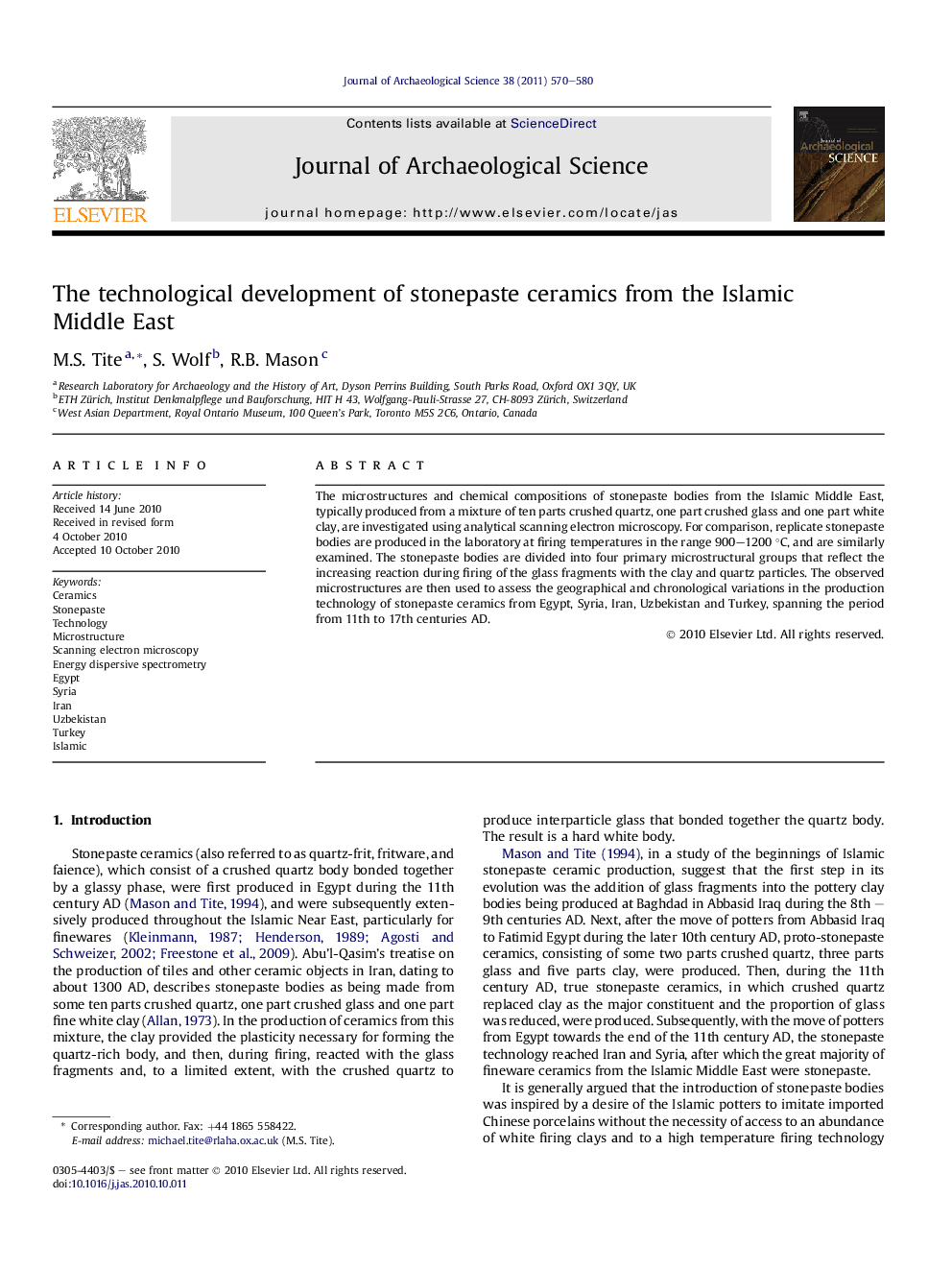| Article ID | Journal | Published Year | Pages | File Type |
|---|---|---|---|---|
| 1036120 | Journal of Archaeological Science | 2011 | 11 Pages |
The microstructures and chemical compositions of stonepaste bodies from the Islamic Middle East, typically produced from a mixture of ten parts crushed quartz, one part crushed glass and one part white clay, are investigated using analytical scanning electron microscopy. For comparison, replicate stonepaste bodies are produced in the laboratory at firing temperatures in the range 900–1200 °C, and are similarly examined. The stonepaste bodies are divided into four primary microstructural groups that reflect the increasing reaction during firing of the glass fragments with the clay and quartz particles. The observed microstructures are then used to assess the geographical and chronological variations in the production technology of stonepaste ceramics from Egypt, Syria, Iran, Uzbekistan and Turkey, spanning the period from 11th to 17th centuries AD.
Research highlights► Development of stonepaste ceramics produced in Islamic Middle East determined. ► Microstructures of stonepaste bodies studied by scanning electron microscopy. ► Role of firing temperature in determining microstructures investigated.
